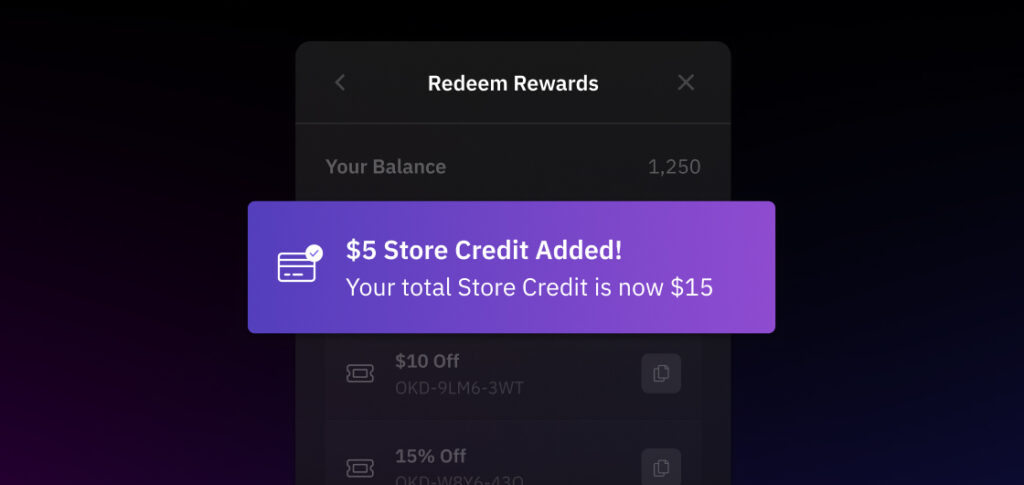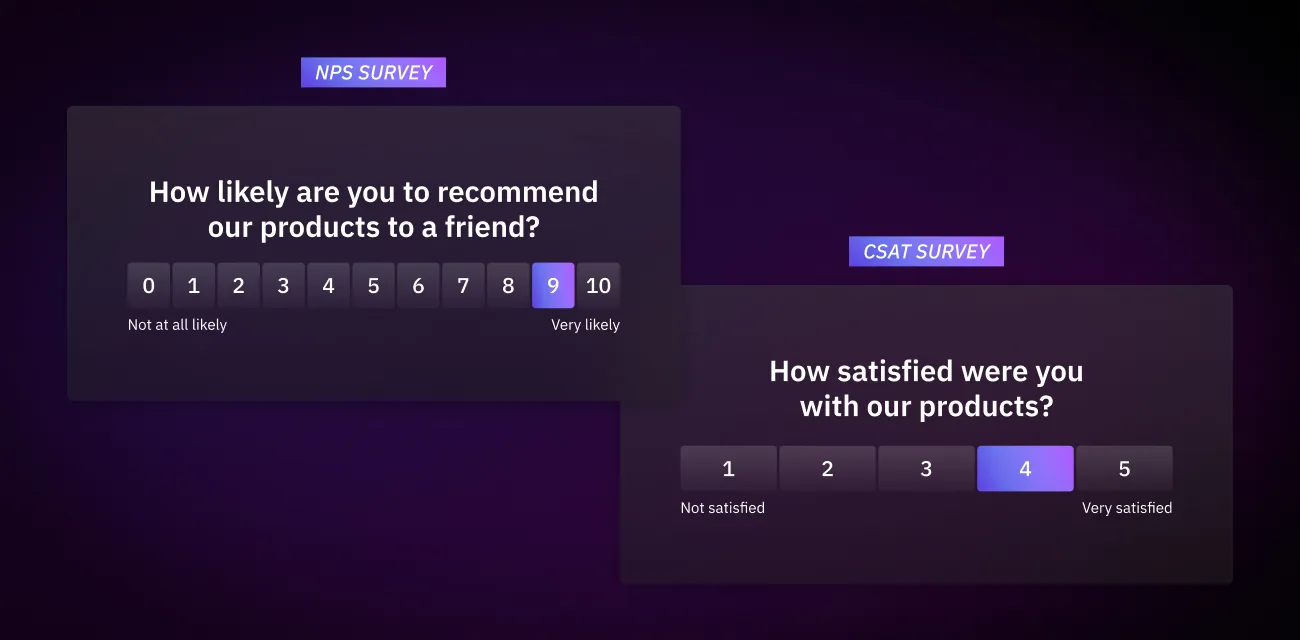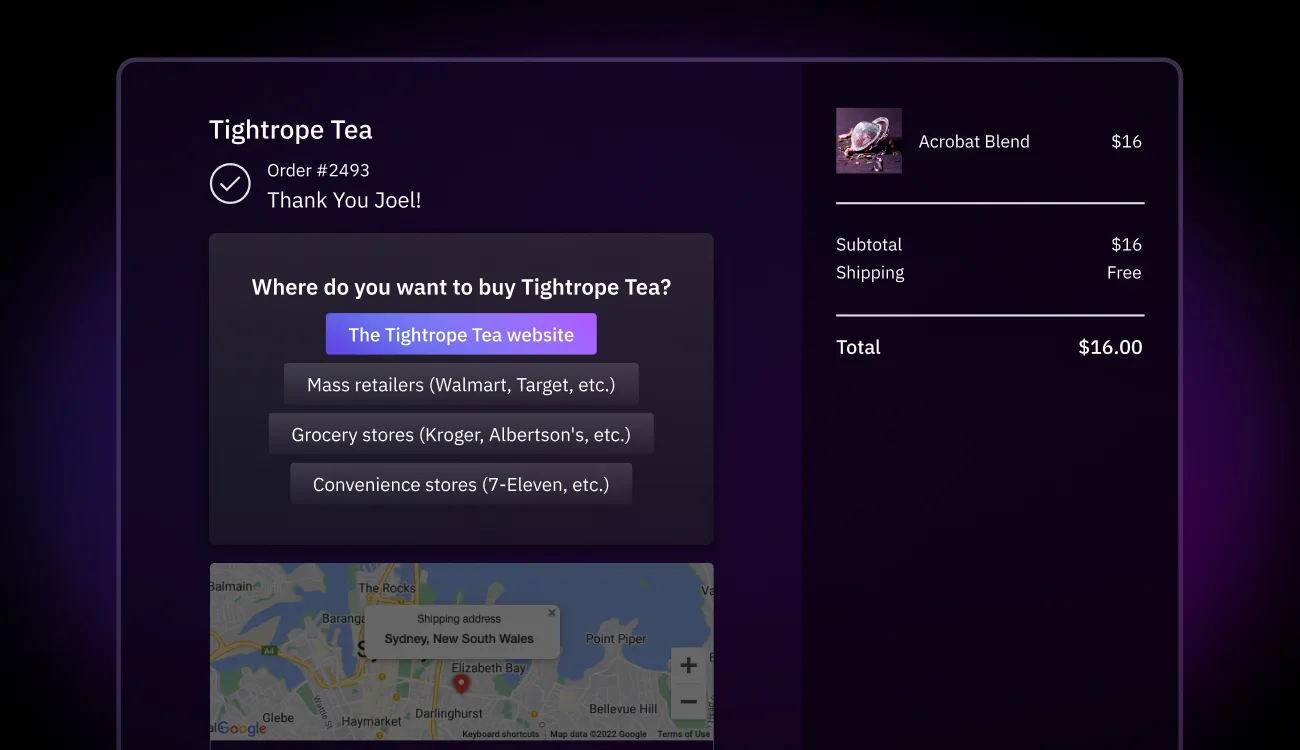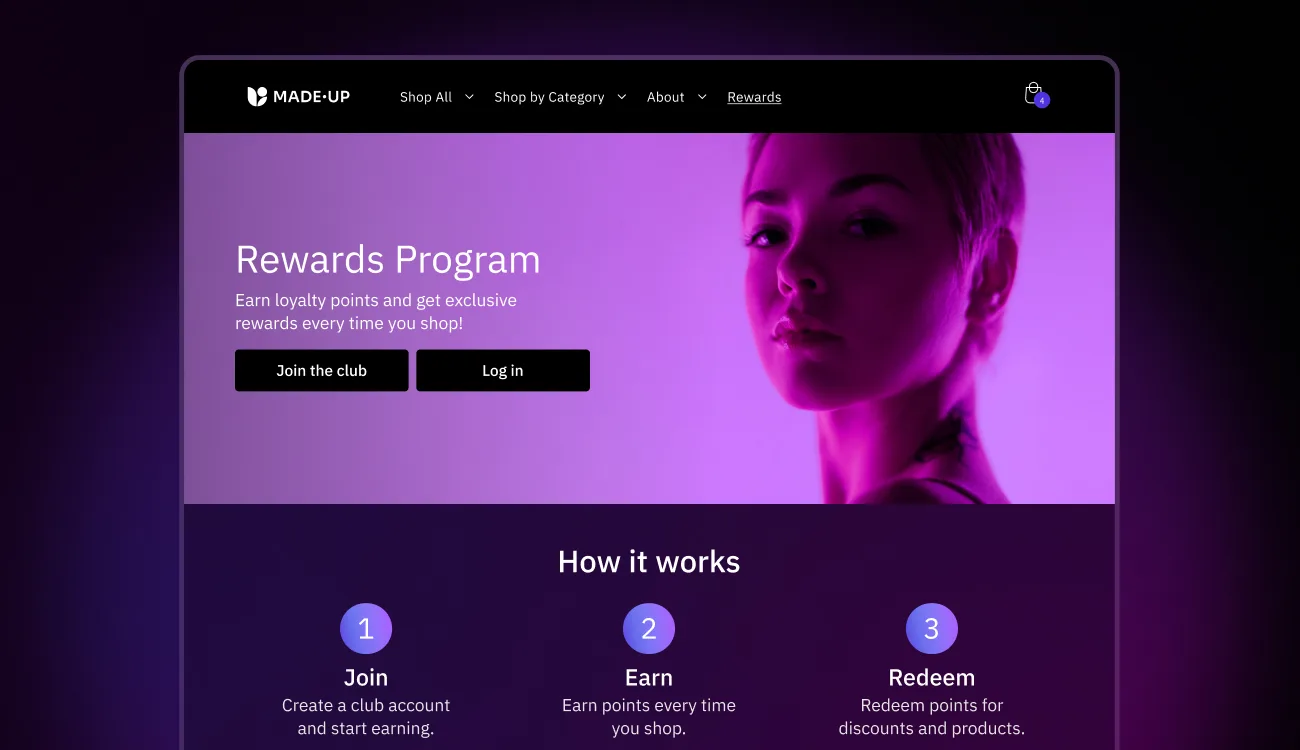
- Customer Loyalty
- Loyalty
- Product
Simplify reward redemption with Store Credit
Katie Vaught | Apr 22, 2025
Mar 14, 2024 | 11 minute read

Megan Wenzl
Content Marketing Manager
With rising acquisition costs, heightened market competition, and fickle customer sentiments, the importance of brands understanding how to measure customer loyalty has reached an all-time high.
Customer loyalty has evolved from beyond a buzzword or industry fad to a cornerstone of success and a fundamental part of marketing strategies for brands.
A brand with a strong understanding of loyal customers and their shopping behaviors can grow faster and more efficiently, retain customers, increase purchase frequency, create brand advocates, and build trust and rapport more effectively.
This guide explores the nine best ways to measure loyalty to better hone your customer retention and convert existing customers into repeat customers in 2024.
Customer loyalty represents more than just doing business and transactional customer interactions—it encourages emotional ties that keep customers engaged and advocating for your brand, potentially contributing to a word-of-mouth halo effect.
Brands use customer loyalty to measure how close a customer is to them and how much they value the relationship. It is a number that shows how likely a customer would pick your brand over another, giving the brand with higher loyalty a competitive advantage in their respective market without leveraging competitive pricing.
A measure of customer loyalty can serve as a pulse check for your brand, allowing you to fine-tune your efforts, adjust what isn’t working, and expand what is working for your customer base. In a nutshell, building customer loyalty is a crucial component of your brand’s long-term viability.
Customer loyalty can be tricky to measure. After all, how can you measure a feeling or impression that customers have toward your brand versus another?
While vitally important to your ability to reduce costs, increase profits, and create sustainable growth, customer loyalty can seem like a moving target if you’re without any apparent quantitative data. Below are 9 practical metrics you can use to quantify customer loyalty.
Net Promoter Score (NPS) is a straightforward and universally understood metric among marketers and merchants for measuring how likely a customer would recommend a brand to others. It is an accessible, easily obtained, and effective metric for measuring customer loyalty.
You should refer to your NPS score to gauge how customers feel about your brand. Based on your score, you can directionally adjust your marketing strategy to improve your customer success.
A Net Promoter Score is obtained through surveying existing customers. The easy and effective method for collecting NPS data is to ask one question: “How likely are you, on a scale of 0 to 10, to tell a friend or coworker about our company, product, or service?” Customers who have already purchased are placed in three groups based on their answers:
To calculate an NPS score, take the percentage of detractors and subtract it from the percentage of promoters. The score is represented in a range from -100 to +100 with higher scores indicating more loyal customers.
For example, a brand with 50% promoters, 30% passives, and 20% detractors would have an NPS score of +30:
The Customer Satisfaction Score (CSAT) measures customer satisfaction more comprehensively and evaluates the customer journey as a whole. A CSAT score can help you focus on areas of improvement throughout your entire shopping experience.
Strategically placing CSAT surveys throughout your customer journey can help proactively harvest feedback directly from customers. With Okendo, Shopify brands can insert surveys at different stages of the journey to collect feedback at common customer touchpoints to get a more accurate measure.
Some examples of where CSAT surveys can be deployed include:
When deploying a CSAT survey, questions should be concise, focused, and answered easily to encourage maximum participation and feedback collection. They should also be scattered throughout the experience rather than just during one stage of the journey.
After collecting responses, the CSAT percentage can be calculated by:
High CSAT scores often signal repeat purchases and positive word-of-mouth marketing, which is essential for a DTC Shopify brand. Efficiently addressing any areas of dissatisfaction can lead to more faithful and engaged customers.

Customer Retention Rate is a vitally important key metric for measuring how loyal and satisfied customers are with your products, services, and overall experience. A high Customer Retention Rate not only indicates that customers make repeat purchases but also that they are likely to be promoters of your brand, thereby amplifying your marketing efforts and contributing to profitability and long-term success.
To measure the Customer Retention Rate, look at how many customers continue making purchases over a set period of time. The metric is usually represented as a percentage.
Simply divide the total number of customers at the beginning of the period by the total number of customers at the end of the period. New customers during the time period should be excluded from this metric.
Repeat Purchase Rate is another straightforward metric—represented as a percentage, it measures how many customers come back to make repeat purchases.
To calculate RPR, simply use this formula:
While this measure may seem simple, it is extremely important for understanding the average customer lifespan and the long-term viability of your brand. A high Repeat Purchase Rate means customers are “voting” for your brand through repeat purchases and confirming their satisfaction in buying multiple times.
It serves as a testament to your brand’s effectiveness and is an indicator that customers would spread the word or recommend your brand to others.
You can increase your store’s Repeat Purchase Rate in a variety of ways. By using customer data collected throughout the shopping journey (reviews and surveys for example) , you can personalize the experience to encourage repeat purchases.
Depending on the target customer’s shopping preferences, you can offer:
Customer Lifetime Value (CLTV) measures the worth of a customer to your brand throughout their entire relationship with your brand. It is a comprehensive metric and provides more context beyond just one transaction or touchpoint.
CLV measures how likely a customer would purchase from you again and the value of all their interactions.
To calculate CLV, you must consider:
Once those metrics are determined, the formula is straightforward:
CLV as a calculated value serves as a compass, providing direction on how you should invest your time and resources, determine customer value, prioritize customer segments, and make marketing decisions to best optimize your customer lifetime value.
While there are numerous ways to increase customer lifetime value, an often overlooked method is taking advantage of referrals.
Churn Rate is a metric that measures the percentage of customers who stop engaging with a brand over a specific period of time and alerts potential issues with the customer experience.
As a Shopify brand looking to learn about customer retention and loyalty, you focus on Churn Rate and identify at what point customers become disengaged. A thorough analysis of the customer journey as it relates to the Churn Rate reveals patterns, trends, and potential reasons why customers choose to abandon interactions with your brand.
In identifying the pain points, you can take action, adjust messaging, and improve the customer experience to prevent a high turnover rate.
To calculate churn rate, follow these steps:
The number represented as a percentage shows how many customers have “churned” or left your brand.
Much of this guide has focused on quantifiable data for measuring customer loyalty, but customer feedback and reviews are a qualitative metric for understanding consumer sentiments toward your brand.
By actively seeking and understanding customer feedback, you can gain valuable insights beyond the numbers and incorporate a human, more personable touch to your loyalty efforts. Customer feedback and reviews serve as a window into the customers’ experiences, preferences, and overall satisfaction.
Collecting customer feedback and reviews is a simple and straightforward process—you can request feedback in post-purchase surveys, follow-up emails, or through collecting product reviews directly on the PDP. Further, much of harvesting feedback can be automated through the use of third-party tools or Shopify applications thereby increasing the participation rate.

Positive reviews and feedback can also be used as social proof for marketing to additional customers. Reviews impact how potential customers view a product or service and ultimately improves conversion rate and customer certainty.
You can combat increasing customer acquisition costs by implementing customer loyalty programs. Incentivizing repeat purchases, providing rewards and discounts, and creating exclusive content keeps customers returning and thereby maximizes the lifetime value of each acquired customer.

You can measure the effectiveness of your loyalty program by reviewing the number of participants, rewards earned, and points redeemed. You can use this information to make data-driven decisions and adjust the loyalty program accordingly.
Customer Referral Rate (CRR) quantifies the amount of customers who advocate for a brand by actively referring others to their products or services. Put simply, it calculates the word-of-mouth effect.
CRR is a testament to the loyalty of the customer base. It can be referenced in tandem with your brand’s NPS score to determine how many customers are actually promoting your brand.
To calculate the customer referral rate, divide the number of customers who have referred others by the total number of customers and convert the results into a percentage.
A high CRR means that customers are not only satisfied (and would qualify as promoters in an NPS score) but are also enthusiastic and delighted by their interactions with your brand. These customers are extremely valuable to Shopify retailers and can create a halo effect of better brand awareness and reputation.
Measuring customer loyalty is often described as both an art and a science. Quantifying subjective feelings, impressions, and sentiments can be difficult and often requires using multiple methods of evaluation.
While all of the metrics in this guide are useful for measuring customer loyalty in unique ways, you should rely on a combination of methods to accurately understand customer loyalty.
For Shopify brands, a common problem that you may face in quantifying customer loyalty is gathering accurate data. Depending on the methodology, your brand may experience difficulty in gathering enough data for actionable insights, preventing bias, and ensuring the full customer journey is captured.
To ensure that enough data is collected, you should:
Customer loyalty is increasingly fundamental to a Shopify brand’s long-term viability and success and therefore, measuring customer loyalty should be a top priority for your online business. Customer loyalty determines whether your brand has a competitive advantage in respective markets and is a key indicator of sustainable growth.
You should use a variety of methods and metrics to quantify customer loyalty and have a strong understanding of how it all compares.
To improve your brand’s customer loyalty and maximize long-term growth, learn more about Okendo Loyalty.
Related articles
Ready to learn more?